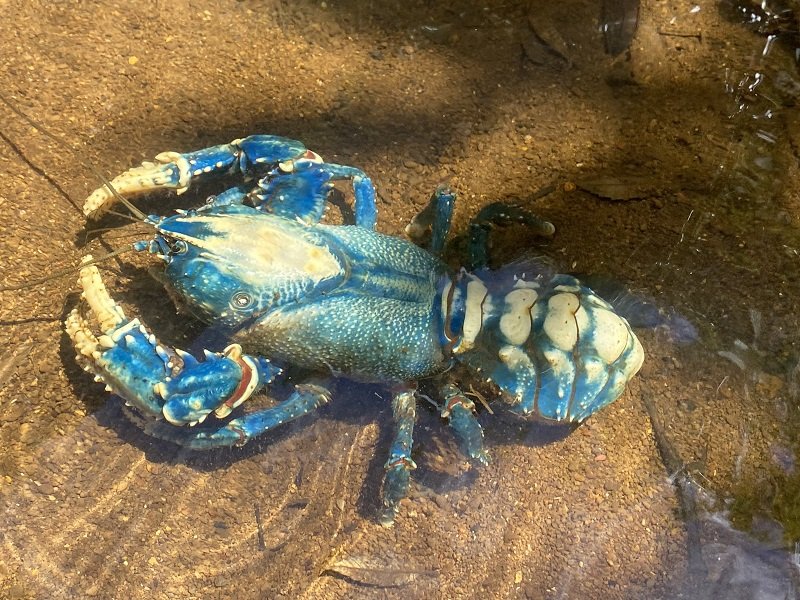Aquatic ecology assessment finds healthy spiny crays
Ecosure’s aquatic team were lucky enough to recently undertake aquatic ecological assessments in some pristine rainforests of northern NSW and southern Queensland. The surveys were conducted at several sites along narrow rainforest creeks. When conducting surveys for spiny crays our team survey key features of the water ways and riparian environment including aquatic plant species, creek bed composition and water quality. Nocturnal spotlighting and electrofishing proved to be the most successful in capturing crays across all of the various sites.
Spiny crayfish of the Euastacus genus are native to Australia and generally distributed from northern Queensland to South Australia. They are known for their distinctive spiny appearance and bright coloration. They can reach up to 20 cm in length and play an important ecological roles as nutrient cyclers as well as providing a food source for larger predators. Spiny crayfish share a symbiotic relationship with unique flatworms called temnocephalens. These flat worms spend their entire lives attached to the body of the crayfish and help to keep parasites at bay. Spiny crayfish are at risk from factors such as habitat alteration, fishing pressure and invasive species.
Several species of spiny crayfish occur within south east Queensland and northern NSW region including the powerful spiny crayfish (E. valentulus), the lamington spiny crayfish (E. sulcatus) and the hinterland spiny crayfish (E. maidae). The hinterland spiny crayfish is listed as critically endangered in QLD and under the ICUN red list.
Overall, there were four crustacean species captured during our recent surveys including the lamington spiny crayfish and powerful spiny crayfish, as well as smaller crustaceans such as riffle shrimp (Australatya striolata) and river prawns (macrobrachium sp.). Unfortunately, no hinterland spiny crayfish were captured or observed, but we are still on the hunt for these amazing creatures throughout the region.
The aquatic team had a fantastic time surveying these regions and gained valuable insights for our clients into the aquatic ecology and health of these populations. Overall, our survey results indicate that the systems are in good condition, with a relatively diverse and abundant aquatic fauna and intact riparian vegetation. We captured a variety of unique and interesting aquatic fauna which made these surveys memorable for the team!
To find out more about our Aquatic Ecology Services click here


